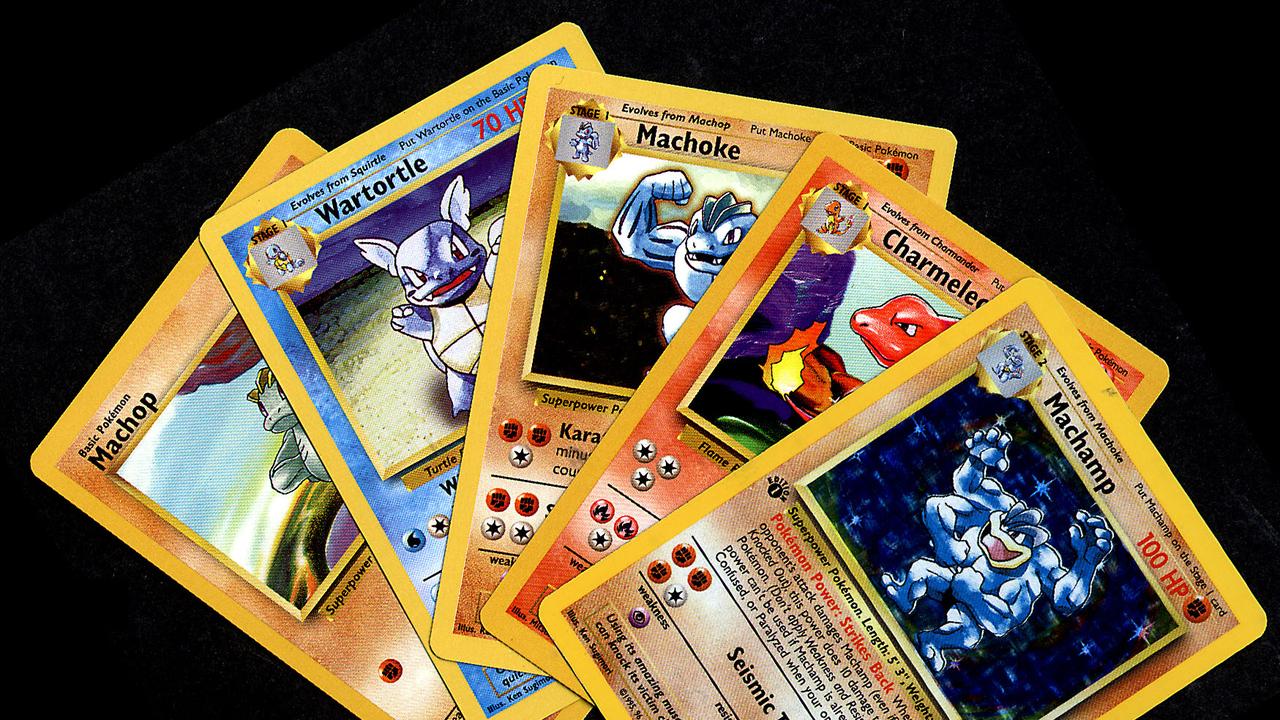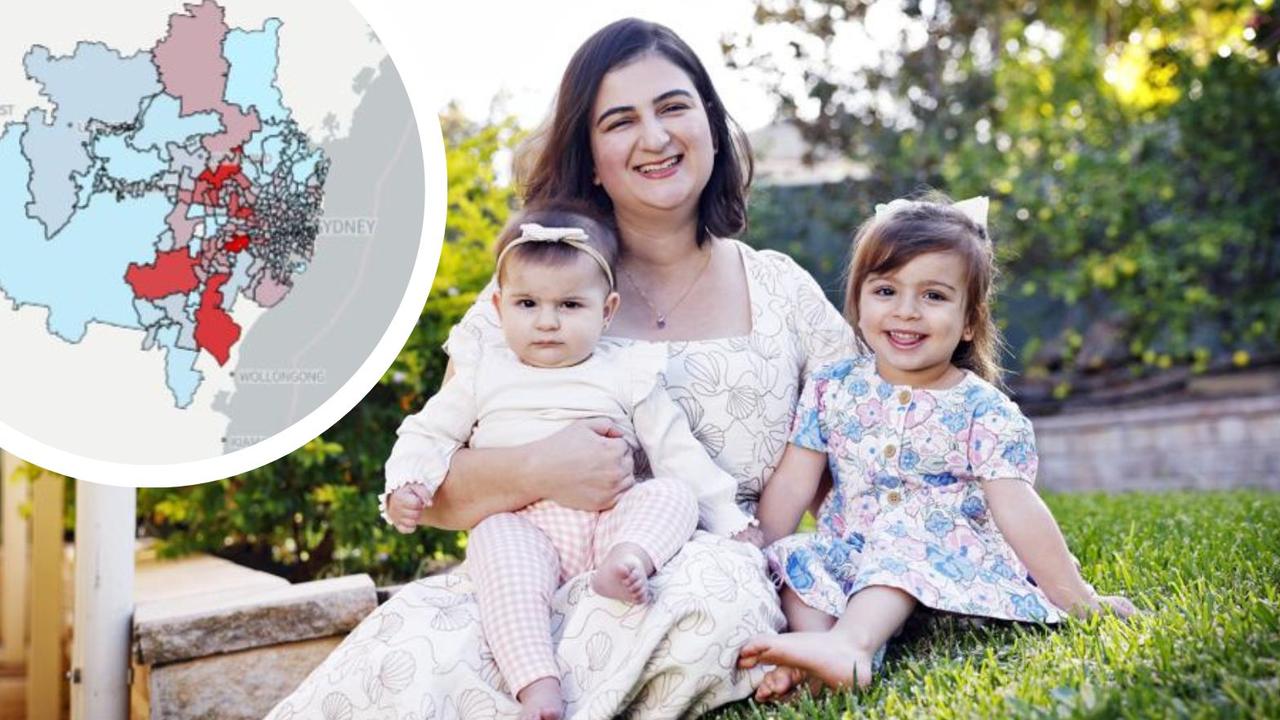Last survivor of our WWII radar crews,100-year-old veteran John McAuley says his mates ‘kept me going’
John McAuley proudly donned his medals and marched on Anzac Day - for the first time since turning 100-years-old and now as the last surviving member of the air force radar crews that served in the jungles of New Guinea during World War II.

NSW
Don't miss out on the headlines from NSW. Followed categories will be added to My News.
The offer of a wheelchair was met with disdain. John McAuley, World War II veteran and aged 100, was not looking for short cuts on Anzac Day.
“Whilst I can use my feet I’ll march to the best of my ability … in the spirit of Anzacs and in the memory of my comrades … who are no longer with us,” he said.
“The idea of any alternative doesn’t suit me whatsoever.”
The sole surviving member of the air force radar crews that operated secretly in New Guinea more than 80 years ago – his final colleague died last October – set off from Elizabeth St determined to complete a route lined by thousands who turned out on a damp autumn morning.
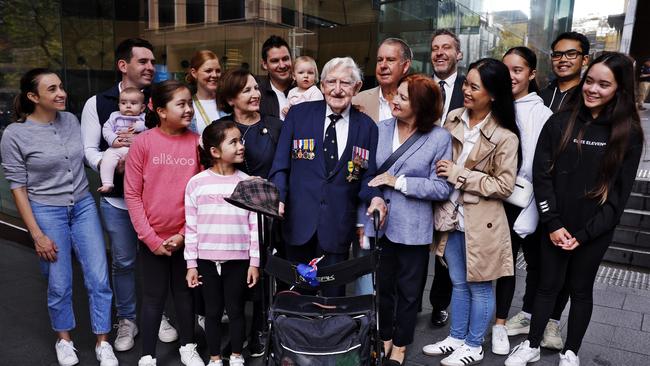
Thirty five minutes later he arrived at Liverpool St, his grandson Stephen by his side, completing the march without stopping, and cheered on by crowds honouring those who served.
Had he been thinking about his mates?
“Absolutely, many of them,” he said. “That’s what kept me going. Thinking of our experiences up in Merauke. The spirit, the camaraderie we had, the fact we were united in what we were doing.
“Young boys we were, and now I’m an old man. I think about what my experience has been and the friendships I made that were lifelong.”
The night before, he had been at the Sydney Opera House for the sunset service on the harbour’s foreshore, and was the focus of a tribute alongside two fellow centenarian veterans.
“A tremendous show,” he said. “It was magnificent from beginning to end.”
Emotional?
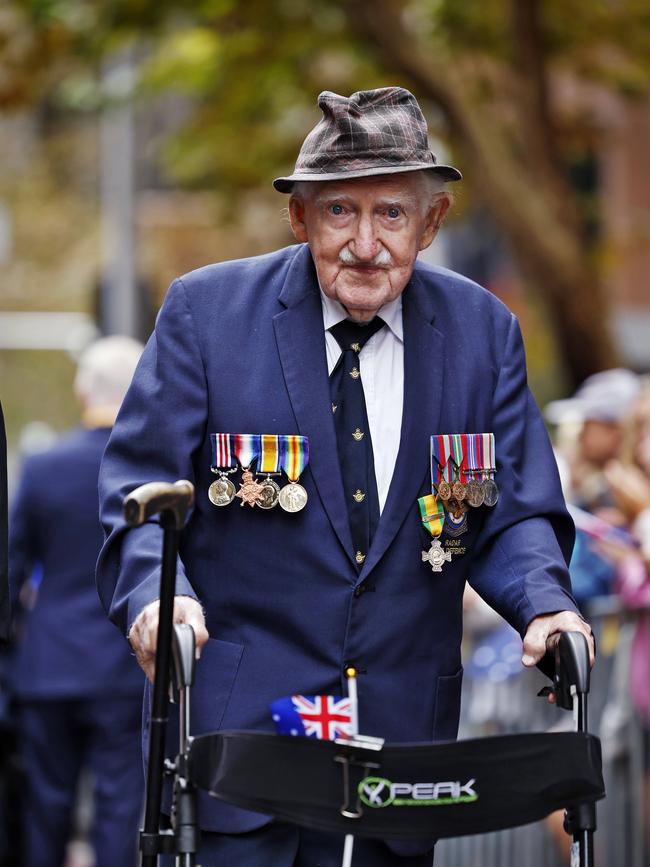
“Yes, but it was a comfort to know that my feelings were shared by so many Australians in the audience,” he said. “I wasn’t alone.”
He was not alone at the march either.
The boy from a tiny South Australian railway town whose post-war studies led him to becoming chief economist for the State Bank of NSW, has three children, nine grandchildren and 30 great-grandchildren.
A significant number of them were in the Sydney CBD to support his Anzac Day journey.
“He was 18 when he enlisted, that tells you about the caliber of the person,” his daughter Catherine McKew said.
“He didn’t talk about (New Guinea) much. They weren’t allowed to at the time and he just lived his life that way.”
Grandson Stephen McAuley, 43, added: “He’s very generous and just self-effacing. He really didn’t talk about his own experiences, he was more concerned about others”.
Which is why the wheelchair was turned down.
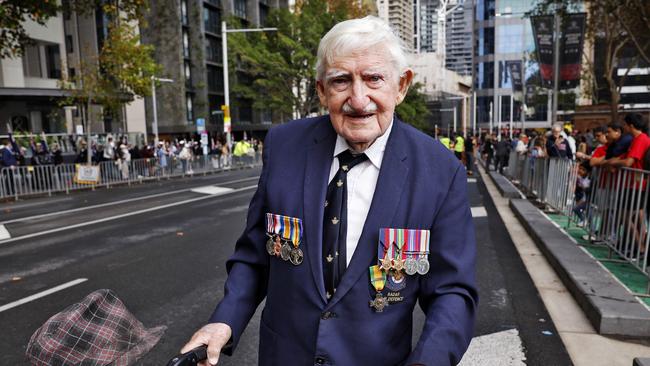
“He wouldn’t have anything to do with it,” said Stephen. “He’s very determined to march. He wants to do it in memory of his mates.”
Those “mates” were the air force radar colleagues with who he operated groundbreaking equipment from under camouflage netting in a remote jungle location, surrounded by swamplands, which shut them off from the outside world for more than 12 months.
Their primary task, with the Japanese threat in the Pacific a reality, was detecting the whereabouts of aircraft using ground control interception which could identify planes at higher altitudes than regular radar.
The radar station in Merauke, along with others across New Guinea and North Queensland, were set up in the months after the bombing of Darwin, where Japanese air raids claimed more than 250 lives.
More Coverage
Originally published as Last survivor of our WWII radar crews,100-year-old veteran John McAuley says his mates ‘kept me going’



